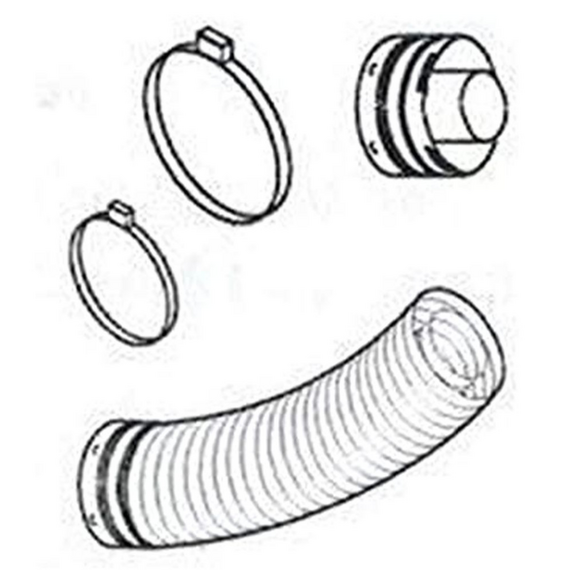Superior Secure FlexTM Flexible 36 Inch Connector Kit
A Superior Secure FlexTM Flexible 36 Inch Connector Kit (FVK36) for a Flexible Vent System is a set of components and accessories designed to facilitate the installation and connection of flexible ventilation ducts or pipes in various HVAC (Heating, Ventilation, and Air Conditioning) and exhaust systems. These kits are commonly used in residential, commercial, and industrial settings where there's a need to channel air, gases, or other substances safely and efficiently.
Flexible Vent Connector Kits are valuable because they simplify the process of setting up a ventilation system, particularly in spaces where rigid ductwork is challenging to install due to space constraints or other limitations. These kits offer flexibility in routing ducts around obstacles and corners while maintaining efficient airflow and ensuring proper ventilation in homes, offices, industrial facilities, and more. Proper ventilation is crucial for maintaining indoor air quality, temperature control, and overall comfort and safety.
Features:
- Flexible Ducts: These are the main conduits that carry air or other substances from one point to another. They are often made of materials like aluminum or flexible plastic and come in various lengths and diameters to accommodate specific installation requirements.
- Connectors: Connector pieces are essential for joining different sections of flexible ducts together, as well as connecting them to other ventilation components such as vents, grilles, or exhaust fans.
- Clamps or Straps: These are used to secure the connections between duct sections and connectors, ensuring a tight seal and preventing air leaks.
- Adapters: Adapter pieces are included to connect the flexible duct to rigid ductwork or other components in the ventilation system.
- Ventilation Accessories: Depending on the kit, it may include accessories such as wall or roof vents, grilles, hoods, or dampers, which can help direct airflow and control the ventilation process.
- Installation Instructions: Clear and detailed installation instructions or guidelines are typically provided to assist users in assembling and installing the flexible vent system correctly and safely.
Specifications:
- Materials: Heavy-duty galvanized steel construction
- Diameters: Designed for 4.5-inch inner diameter and a 7.5-inch outer diameter venting systems
- Limited Lifetime Warranty
Downloads:
No reviews found


